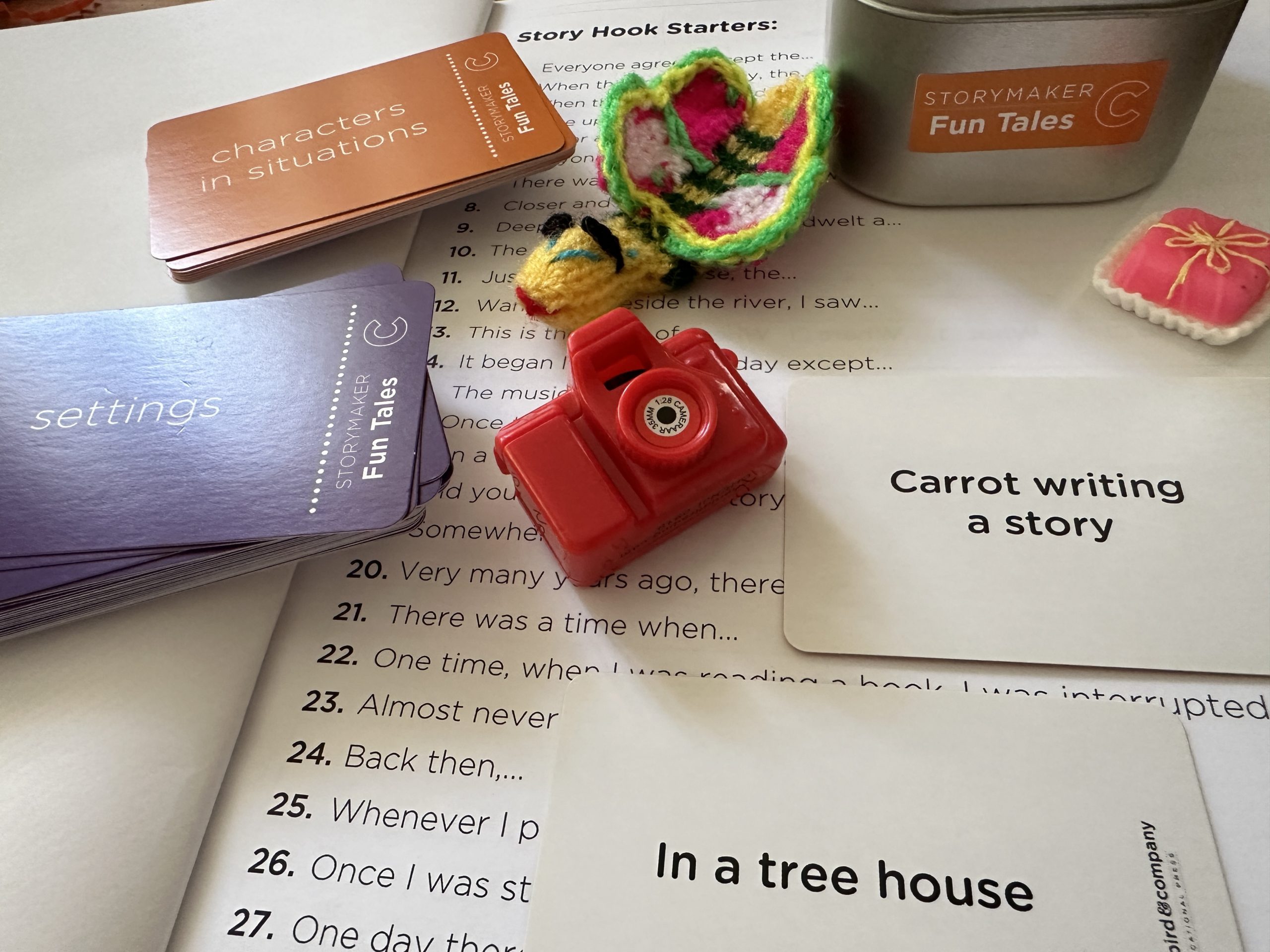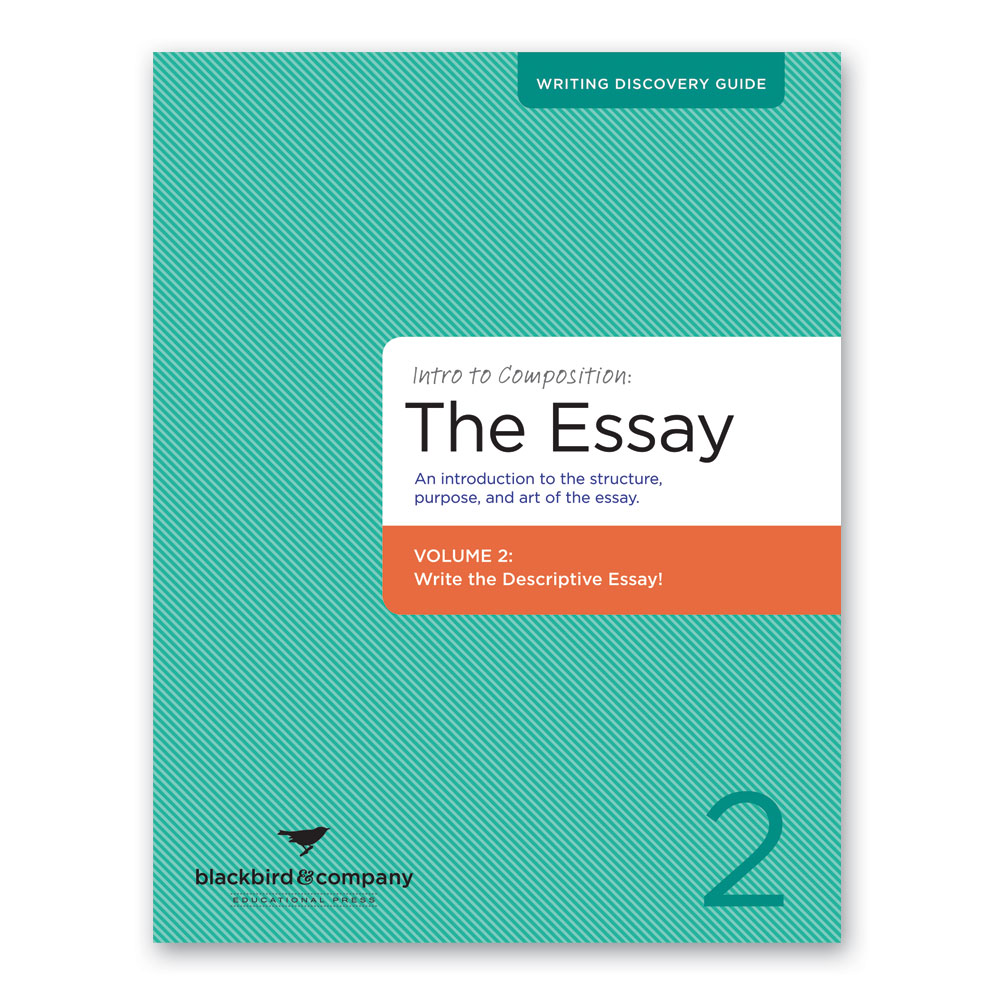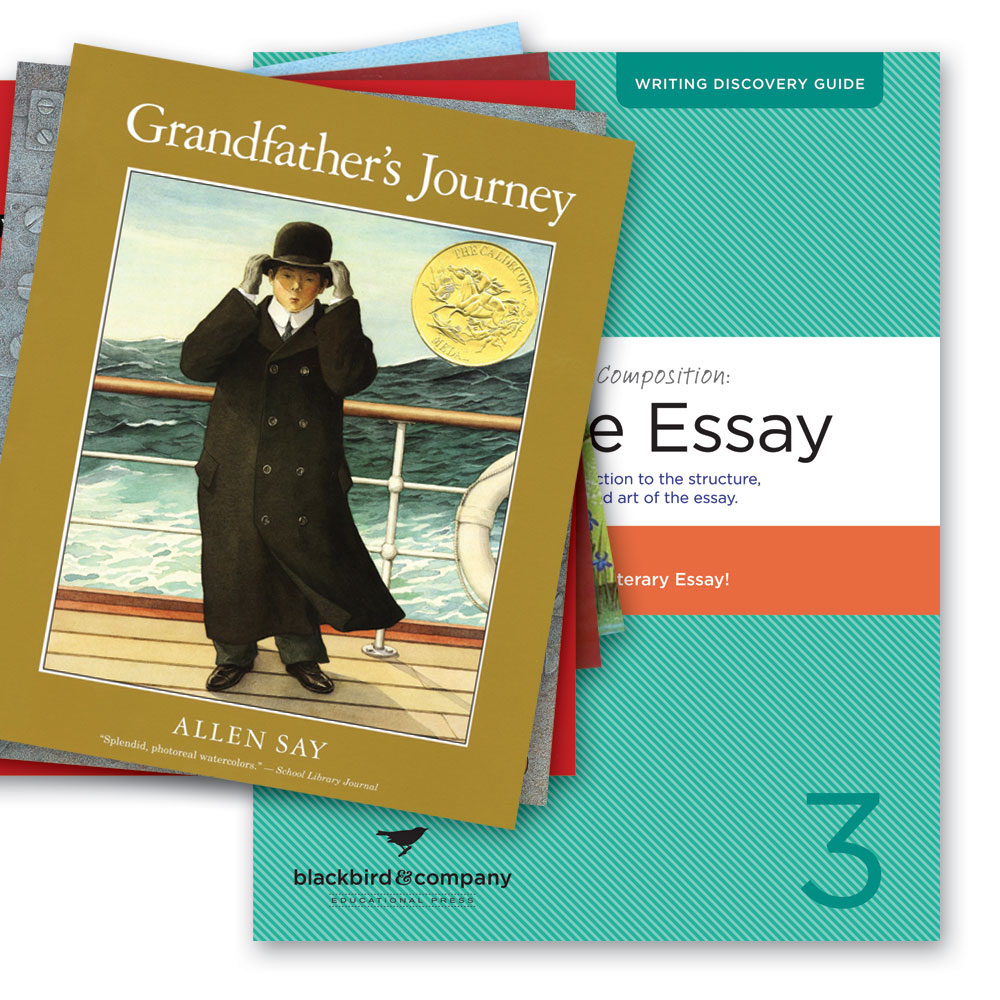
Storymaker teaches student writers to craft an amazing HOOK!
The HOOK is a topic sentence that inspires writers to write their ideas and encourages readers to read on. The subtle distinction we are making between the topic sentence and the HOOK is this: Think of a literal fishhook that catches the reader and makes them want to read on. A great HOOK might be charged with sensory details or concrete examples. It may be full of imagery and action!
Storymaker is designed to HOOK 2nd, 3rd, and 4th grade students into the art of narrative journal writing. With three terrific thematic options to choose from—Farm Tales, Fairy Tales, and Fun Tales—the possibilities are endless.
Each week the primary goal is to craft a HOOK by combining:
One HOOK starter: “Everyone agreed except…”
One Character in Situation card: “carrot writing a story”
One Setting card: “in a treehouse”
There are a myriad of possibility with these three parts! Encourage your students to play around with the phrases and to add, subtract or change connecting words. Here are a few possibilities:
1. Everyone agreed except the carrot writing a story in a treehouse.
OR
2. Everyone in the treehouse agreed except the carrot writing a story.
OR
3. Except for the carrot writing a story, everyone in the treehouse agreed.
OR
4. Except for the carrot writing a story about the treehouse, everyone agreed.
OR
5. Once upon a time, except the carrot writing a story in a treehouse, everyone agreed.
Remember to help your students think about the last sentence being just as important as the first. Remind them that the goal is for readers to be surprised, for readers to want to keep thinking about the story they just read. We call this the TWIST at the end. Here are a few endings that might hold up to the above HOOK:
In the end, as the carrot finished reading the story written in the treehouse aloud to all the other vegetables, there was a moment of collective silence and then a roar of whistles and clapping!
OR
Everyone agreed that Carrot writing the treehouse story was not a good idea, but in the end they all agreed they were wrong.
Sometimes, once the HOOK is composed, offering a TWIST for students to write toward helps them bring shape to an idea with a beginning, middle, and end.
Following are some ideas to be creative with story-making.
Create a Collaborative Story
Here the teacher begins collaborating on HOOK crafting as above on a whiteboard. This is the HOOK demonstration. Once the HOOK is settled upon, students copy it into the journal and the fun begins—What happens next? Continue gathering ideas up to 5 story details composed together into sentences. Create one sentence to end—the TWIST.
Student creates the HOOK + 3 Story Detail Sentences & the Teacher Writes the TWIST at the end
Sometimes knowing that a treat is waiting at the end of the journey is all the motivation our student writers need!
Round Robin
Students each create an original HOOK in their journal. Journals are passed around. Classmates reads what is written so far and adds a sentence in the friend’s journal. Keep passing until there are 6 sentences including the Hook. Journals are then returned to the student to read and create a closing TWIST.
Everyone has stories to tell. Help your students tell them well the fun way with Storymaker.
~Kimberly





















